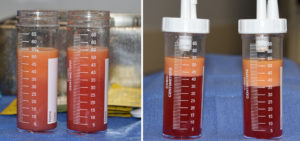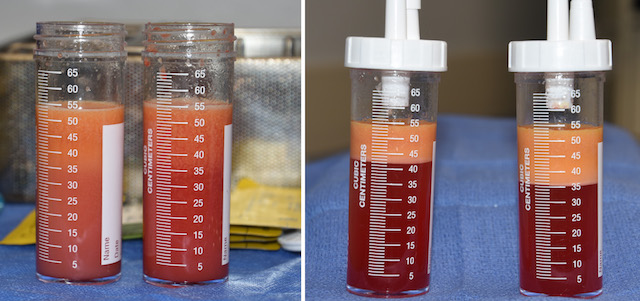Fat transfer is tremendously popular as a material option for facial voluminization. Almost any patient has adequate donor material and as an autologous graft there are no real medical downsides to using it. The face is a well vascularized recipient site so, in theory, injected fat should survive well. But as we all know such fat survival is far from guaranteed. A favorable recipient site along is not enough. There are many other variables that can affect injected fat survival, all of which has generated a lot of research studies to determine what their potential role may be.
One of the most known and studied is that of fat concentration. This is one of the most logical steps to do in fat grafting since it is easily observed that the initial liposuction harvest is an admixture of tumescent solution, blood, fat and free lipid materials. Since only one of these four can potentially survive as fat cells, getting rid of the rest and creating as pure of a fat concentrate as possible is necessary.

One observation that is very relevant in this picture is how much of the total initial volume of aspirate creates a much smaller volume of fat that is able to be injected. Here we can see that in equal amounts of aspirate (110ccs or two 55ccs volumes) the final fat concentrate was around 30ccs or just 27%. While in the face this low yield on fat concentrate does not usually matter due to the low injected volumes, but in larger body fat injections it speaks to how much liposuction aspirate is really needed.
Dr. Barry Eppley
Indianapolis, Indiana



